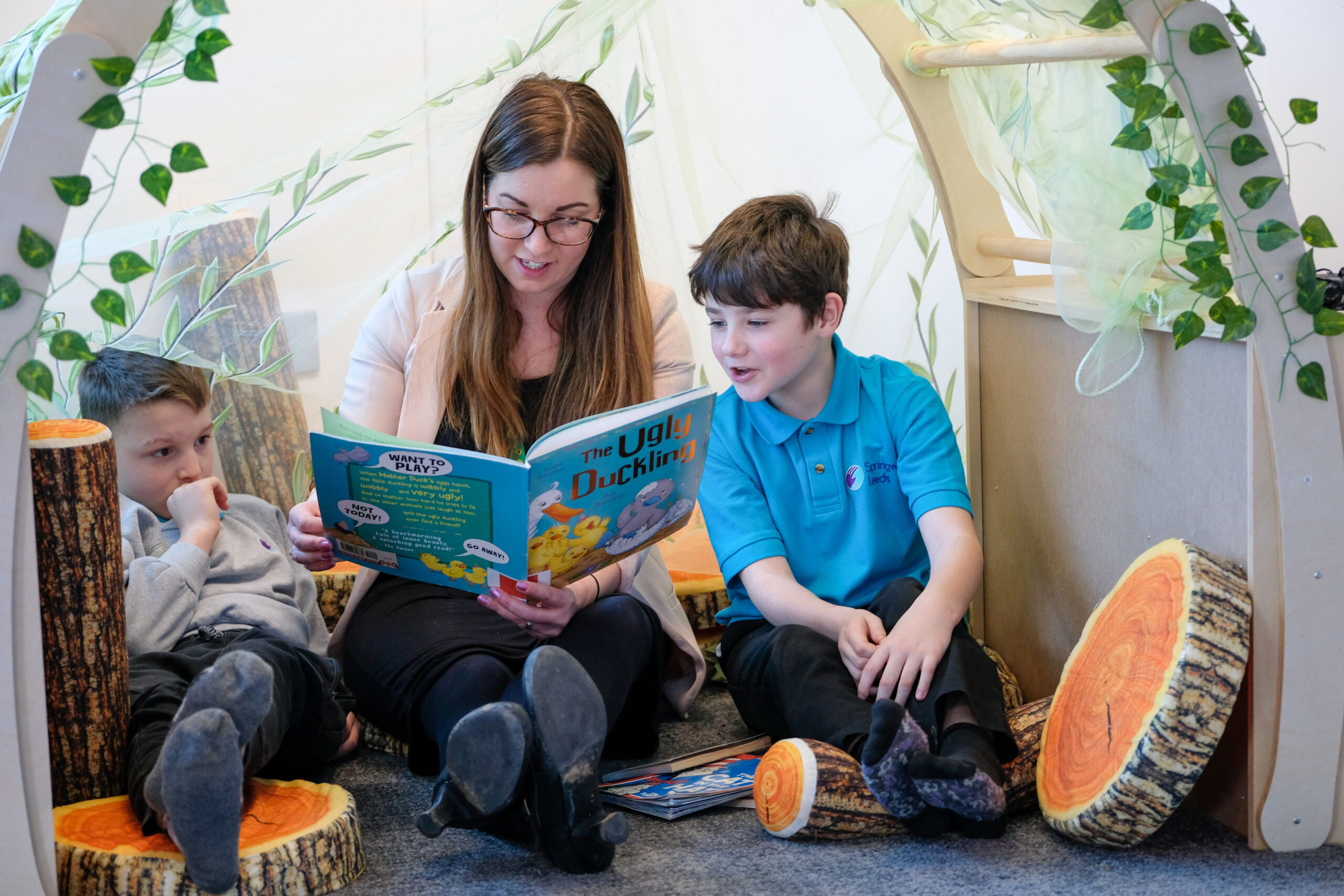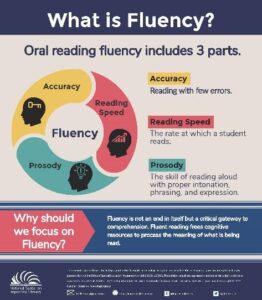By Adele Thackeray & Mia Sneyd
Fluency
Reading fluency is comprised of two parts:
- The first would be the ability to read words in text automatically and effortlessly;
- The second is the ability to read orally with appropriate phrasing and expression (prosody)
that reflects the meaning of the text.
When young children first begin to read connective texts, they usually read without good prosody. They show many long erratically placed pauses and stutters. However, there are still pupils who do not read with good prosody and still have erratically placed pauses and stutter yet may be in KS2 or KS3/4.
Research shows that pupils who read words automatically and with good oral expression can read silently with good comprehension. Fluency must therefore be viewed from both of these lenses (automaticity and expression). If only one area is taught, findings show that pupils will not achieve the expectations in regards to their comprehension skills. Yet, in many classrooms one aspect of fluency is given priority over the other.
One intervention we can use to support this is Paired Reading. This intervention has been proven to support fluency development through children reading aloud to their peers or adults. Pupils will also benefit from listening to others as teachers can use this opportunity to model expert ‘prosody’ therefore demonstrating a rhythmical pattern to their reading. Whilst paired reading pupils can mark their text together to help them to see where pauses need to be, or which words need to be emphasized.
“Students who read orally with good expression are more likely to comprehend deeply when reading silently.” (Rasinski, T V, Reutsel, CR, Chard, D &; Linan- Thompson, S (2011)
Comprehension Barrier: Vocabulary
The relationship between effective reading fluency and vocabulary is an important one. Often the problem lies in pupils being able to decode the word so fluency appears secure but the pupil fails to comprehend. Cris Tovani identifies that pupils experiencing comprehension barriers will often, “blast through words expecting meaning to arrive.” (2000, I Read It But I Don’t Get It”)
In order for pupils to comprehend a text, 90% of the vocabulary needs to be understood. If understanding the vocabulary of the text is a barrier then the gist is lost. For example: I trained the borzoi well.
Picture A Picture B
If you visual picture B, you will have misunderstood the text. A borzoi is indeed Picture A. The balance between vocabulary, visualisation and gaining the gist of the text is a fine balance.
So, how can we improve vocabulary? Firstly, avoid diluting the vocabulary. Instead, introduce new vocabulary supported by images and linking to prior knowledge of vocabulary. Exploring etymology (origin of words) is useful to make connections to other words. Secondly, teach vocabulary explicitly. When we are teaching vocabulary, we must ensure the word travels from short term memory into long term memory. This means spending time in the working memory corridor. Pictowords (below), saying the word aloud, clapping out the syllables, looking for synonyms and antonyms, putting the word in sentences, all help to access the working memory. However, effective recap and recall will need to be built in overtime. 
In summary, learning to read is complex but by understanding these reading components we empower ourselves to teach reading more effectively.
















